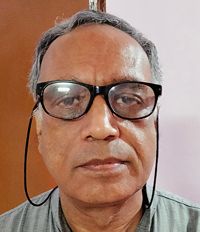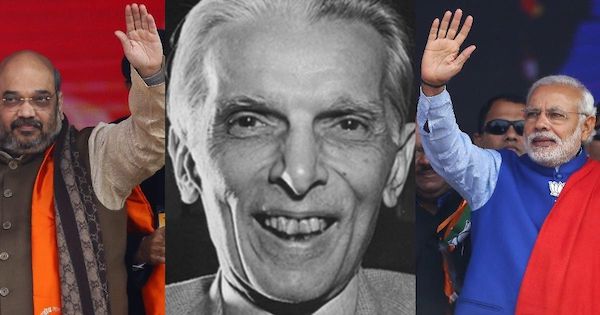
The massacre was a catalyst for fusion of multiple strands of anti-imperialist politics
The tragic moment also became a transformative moment. The transformation manifested itself at four levels — local, regional, national and even global.
“The April 13 massacre also contributed to a global perspective on all forms of violence and injustice. Gandhi imparted an extremely profound defining label to the massacre. He called it an act of violence not just against a community, region or even a country, but against all humanity. He termed it a ‘crime against humanity’. This was almost three decades before it became a standard catch-phrase by the human rights movements all over. The Jallianwala Bagh carnage was an act in which Punjabis or Indians were not the only victims and the British not the only perpetrators. It was an act of global shame for which all humanity ought to hang its head. Just as all injustice is global in character, so should the resistance against it be.”

The massacre at Jallianwala Bagh on April 13, 1919, may not have lasted more than 10 minutes. This time was enough for Brigadier General Dyer to get his troops to fire 1,650 rounds on the crowd that had gathered there on the auspicious occasion of Baisakhi. Dyer’s intention was not to disperse the crowd but to terrorize it. Close to 20,000 people had assembled there. In official records, 379 people were killed and many times more wounded. Contemporary estimates of the dead varied between 1,000 and 1,800. Some historical accounts, produced many decades after the massacre, estimated the number of the dead to be 500-700. The Jallianwala Bagh Memorial recognized close to 2,000 martyrs. It was clear that many of the wounded would not have survived. The sheer anonymity of the crowd made it difficult to get the accurate figure of the dead. The general consensus that developed subsequently was that anywhere between 500 and 1,800 people would have been killed during the shooting.
The tragic moment also became a transformative moment. The transformation manifested itself at four levels — local, regional, national and even global.
There is thus no clarity on the death toll. But equally, there is no clarity on why Jallianwala happened in the first place. The gathering was not entirely political. Many people had come from nearby areas and may not have known that the city of Amritsar had been placed under curfew. The city administration had been handed over to the army and thus came under the direct control of General Dyer. Amritsar had witnessed violence on April 10 when a demonstration against the Rowlatt Act had turned violent; five Englishmen had been killed by a mob. Nothing else had happened which would warrant genocidal violence on this scale. So why did it happen?
Was it because, as some writers suggested, General Dyer was mentally sick and suffering from arteriosclerosis and experienced a sudden rush of blood? Or, more plausibly, was it because the British were haunted by the ghost of 1857? Any act of violence by Indians reminded them of 1857. They saw a great conspiracy in the events of April 10. They feared that some help would come from outside, possibly Afghanistan. They panicked. They anticipated violence from Indians and inflicted greater violence on them to prevent it.
The story of Jallianwala Bagh, however, did not end here. It was a moment of great tragedy. Not since the days of 1857 had the country experienced such barbarity. But the tragic moment also became a transformative moment. The transformation manifested itself at four levels — local, regional, national and even global. From being a religious center, Amritsar turned into a mascot of the anti-imperialist struggle. The massacre also changed the face of Punjab. From being a colonial heartland and a garrison state at the service of British colonialism, Punjab emerged as the headquarters of the nationalist struggle. It may have been a great psychological blow to the British to discover that Punjab was no longer a part of their support system but a major actor in the struggle against them.
Jallianwala Bagh also changed the contours of nationalist politics at the all-India level. Before the massacre, there were two shades of anti-imperialist politics. There was the mild and moderate opposition by the middle classes, which took the form of petitions and appeals to the goodwill of the rulers. Their opposition was non-violent and within the confines of the law. As against this, there were the spontaneous and often violent struggles of peasants, workers and artisans. The two forms of opposition ran parallel to each other and maintained their separate existence distant from each other. Jallianwala Bagh changed all that. Its reverberations shook the conscience of all strands of the population, cutting across class lines. Gandhi brought the two together into a composite anti-imperialist politics that was non-constitutional and non-violent at the same time and involved both the middle and the lower classes in a seamless, multi-class grid of nationalist politics. Jallianwala Bagh became the catalyst for the fusion of multiple strands of anti-imperialist politics.
The April 13 massacre also contributed to a global perspective on all forms of violence and injustice. Gandhi imparted an extremely profound defining label to the massacre. He called it an act of violence not just against a community, region or even a country, but against all humanity. He termed it a ‘crime against humanity’. This was almost three decades before it became a standard catch-phrase by the human rights movements all over. The Jallianwala Bagh carnage was an act in which Punjabis or Indians were not the only victims and the British not the only perpetrators. It was an act of global shame for which all humanity ought to hang its head. Just as all injustice is global in character, so should the resistance against it be.
Quite apart from the transformative character of the moment, it also created a continuous stream of literary and historical writings which shaped the ways in which Jallianwala Bagh was preserved and stored in popular memory. In historical writings, Jallianwala Bagh was projected as a trigger for subsequent anti-imperialist politics. It became a pivot for Indian nationalism, and a starting point of a process that eventually culminated in Independence in 1947. But a different dimension was imparted to it by literary writings. A large number of stories, poems and novels, written in Hindi, Punjabi, Urdu and other languages, unearthed for us the world of emotions and subjectivities around Jallianwala Bagh. They focused on the human dimension, the individual experiences, loss and sorrow, feelings and emotions, trauma and anger, often buried deep in multiple layers of the subconscious.
Thus, it was that a brief episode became a transformative moment. Many scholarly and creative responses have illuminated for us the world of Jallianwala Bagh. We may still not know how to make sense of this world. But we know how to remember it and preserve it in our collective memory.
(The author is Professor of History, Ambedkar University Delhi)





Be the first to comment